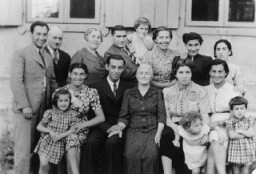You searched for: %E9%AA%B0%E5%AE%9D%E8%B5%94%E7%8E%87%2C%E9%AA%B0%E5%AE%9D%E6%B8%B8%E6%88%8F%E8%A7%84%E5%88%99%2C%E8%B5%8C%E5%A4%A7%E5%B0%8F%E6%80%8E%E6%A0%B7%E8%B5%A2%E9%92%B1%2C%E3%80%90%E6%89%93%E5%BC%80%E7%BD%91%E5%9D%80%E2%88%B6789yule.com%E3%80%91%E9%AA%B0%E5%AE%9D%E6%8A%80%E5%B7%A7%2C%E9%AA%B0%E5%AE%9D%E8%B5%94%E7%8E%87%2C%E9%AA%B0%E5%AE%9D%E5%A4%A7%E5%B0%8F%E6%94%BB%E7%95%A5%E5%BF%85%E8%83%9C%E6%B3%95%2C%E8%B5%8C%E5%9C%BA%E9%AA%B0%E5%AD%90%E7%82%B9%E6%95%B0%E7%9C%8B%E8%B7%AF%E6%B3%95%2C%E3%80%90%E5%8D%9A%E5%BD%A9%E5%B9%B3%E5%8F%B0%E2%88%B6789yule.com%E3%80%91
<< Previous | Displaying results 91-100 of 225 for "%E9%AA%B0%E5%AE%9D%E8%B5%94%E7%8E%87%2C%E9%AA%B0%E5%AE%9D%E6%B8%B8%E6%88%8F%E8%A7%84%E5%88%99%2C%E8%B5%8C%E5%A4%A7%E5%B0%8F%E6%80%8E%E6%A0%B7%E8%B5%A2%E9%92%B1%2C%E3%80%90%E6%89%93%E5%BC%80%E7%BD%91%E5%9D%80%E2%88%B6789yule.com%E3%80%91%E9%AA%B0%E5%AE%9D%E6%8A%80%E5%B7%A7%2C%E9%AA%B0%E5%AE%9D%E8%B5%94%E7%8E%87%2C%E9%AA%B0%E5%AE%9D%E5%A4%A7%E5%B0%8F%E6%94%BB%E7%95%A5%E5%BF%85%E8%83%9C%E6%B3%95%2C%E8%B5%8C%E5%9C%BA%E9%AA%B0%E5%AD%90%E7%82%B9%E6%95%B0%E7%9C%8B%E8%B7%AF%E6%B3%95%2C%E3%80%90%E5%8D%9A%E5%BD%A9%E5%B9%B3%E5%8F%B0%E2%88%B6789yule.com%E3%80%91" | Next >>
-
Oranienburg
ArticleThe Oranienburg concentration camp was established as one of the first concentration camps in Nazi Germany on March 21, 1933. Learn more

-
Moringen Youth Camp
ArticleThe Moringen camp was one of the so-called youth protection camps that the Nazi regime established for young people who were alleged to have strayed from Nazi norms and ideals.
-

-
The Rwanda Genocide
ArticleFrom April to July 1994, extremist leaders of Rwanda’s Hutu majority directed a genocide against the country’s Tutsi minority. Learn more

-
Norbert Wollheim describes his experiences on a transport during deportation from Berlin
Oral HistoryNorbert studied law and was a social worker in Berlin. He worked on the Kindertransport (Children's Transport) program, arranging to send Jewish children from Europe to Great Britain. His parents, who also lived in Berlin, were deported in December 1942. Norbert, his wife, and their child were deported to Auschwitz in March 1943. He was separated from his wife and child, and sent to the Buna works near Auschwitz III (Monowitz) for forced labor. Norbert survived the Auschwitz camp, and was liberated by US…

-
Hermann Ludwig Maas
ArticleHermann Ludwig Maas, a Protestant pastor in Heidelberg, Germany, was a rescuer and clergyman who stood in solidarity with the Jewish community.
-
Dr. Robert Ritter visits a "Gypsy camp"
PhotoDr. Robert Ritter talks to several residents in a Zigeunerlager ("Gypsy camp"). Hamburg, Germany, 1940. During the Nazi era, Dr. Robert Ritter was a leading authority on the racial classification of people pejoratively labeled “Zigeuner” (“Gypsies”). Ritter’s research was in a field called eugenics, or what the Nazis called “racial hygiene.” Ritter worked with a small team of racial hygienists. Among them were Eva Justin and Sophie Ehrhardt. Most of the people whom Ritter studied and…

-
Eva Justin interviews a Romani woman interned in a "Gypsy camp"
PhotoA color photograph of Eva Justin interviewing a Romani woman interned in a "Gypsy camp." Vienna, Austria, 1940. During the Nazi era, Dr. Robert Ritter was a leading authority on the racial classification of people pejoratively labeled “Zigeuner” (“Gypsies”). Ritter’s research was in a field called eugenics, or what the Nazis called “racial hygiene.” Ritter worked with a small team of racial hygienists. Among them were Eva Justin and Sophie Ehrhardt. Most of the people whom Ritter studied and…

-
A family interned in a "Gypsy camp"
PhotoA family stands outside of their wagon while interned in a Zigeunerlager ("Gypsy camp"). In the background, children are crowded around Eva Justin. Justin worked for the Center for Research on Racial Hygiene and Demographic Biology. Schleswig-Holstein, Germany, 1938. During the Nazi era, Dr. Robert Ritter was a leading authority on the racial classification of people pejoratively labeled “Zigeuner” (“Gypsies”). Ritter’s research was in a field called eugenics, or what the Nazis called…

-
Halle
ArticleHalle an der Saale was a satellite camp of Buchenwald concentration camp. It was established by the Nazis in Saxony, Germany in 1941.
